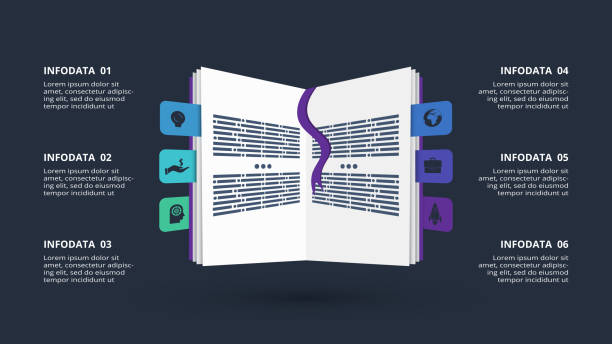Key Takeaways
- Experiment with various binding techniques to enhance both style and longevity.
- Utilize mixed media and interactive components to create an engaging, multisensory reading experience.
- Utilize digital platforms for efficient publishing, collaboration, and distribution.
Embarking on a book project is an inspiring fusion of creativity and hands-on craftsmanship. In today’s competitive literary landscape, choosing innovative publishing and binding approaches not only preserves your words but also elevates the reading experience to new heights. From the first spark of an idea to the careful assembly of each page, every decision—down to paper stock and binding technique—becomes part of your story. Whether you’re producing a novel that weaves complex characters, a memoir that captures precious memories, or an artful visual anthology, exploring options for perfect book printing can add distinction and professionalism to your finished work. Perfect binding, for example, is revered for its clean lines and bookstore-quality finish, making it a favorite for both indie and established authors. These techniques offer solutions for both first-time authors entering the world of book publishing and seasoned self-publishers seeking to make a lasting impact with each of their releases.
The right binding and publishing method sets the stage for how your story will be experienced, from the tactile feel in a reader’s hands to accessibility across digital platforms. It’s about blending visual artistry with practical durability—ensuring your book not only stands out on the shelf but also withstands the test of time, frequent reading, and even travel. Distinctive design, personalization, and interactivity are becoming increasingly important as readers seek unique, immersive experiences that extend beyond mere text consumption. In a world saturated with mass-produced content, hand-crafted features and thoughtful design cues turn your book into a meaningful artifact. Let’s explore creative strategies to help transform your book project into an unforgettable masterpiece that resonates with every reader.
Exploring Unique Binding Techniques
While traditional binding offers time-tested reliability, more authors are experimenting with inventive alternatives that make their projects truly one-of-a-kind. Methods such as Japanese stab binding, Coptic stitching, and exposed spine binding not only secure the pages but also turn the book’s construction into a piece of visual art. Japanese stab binding, for example, showcases ornate stitching along the spine, offering timeless appeal and a delicate, intricate appearance. Coptic stitch binding, renowned for its flexibility and ability to lay flat, is ideal for sketchbooks, cookbooks, or journals where usability is paramount. Exposed spine techniques reveal colored threads or painted glue, adding a modern, industrial edge to the aesthetic. Through these methods, authors become book artists, integrating form and function with striking results.
Incorporating elements like vellum overlays, handmade washi paper, or tactile embellishments such as embossed covers can dramatically enhance a book’s sensory appeal. These components provide readers not just with a story, but with a physical experience—pages that rustle with distinction, covers that beg to be touched, and finishes that reflect hours of dedication.
To go a step further, try blending materials and media in inventive ways. Consider embedding photography, hand-painted illustrations, or textured inserts throughout the pages. Mixed media not only enlivens the book but also invites readers into a richer, multidimensional world. This tactile, interactive art form transforms reading from a passive activity into a hands-on experience, perfect for art books, children’s stories, poetry collections, or personal journals. The result is a book that stands out in both content and form—a keepsake that readers will treasure and display.
Personalizing with Handwritten Text
Bringing a touch of handwritten text throughout your book adds a sense of warmth, personality, and individuality to your pages that no digital font can match. Marginal notes that tell the story behind a chapter, hand-drawn chapter headings adorned with flourishes, or select handwritten passages interspersed between printed text create intimacy and authenticity. For authors who favor poetry, memoir, or even limited-run edition fiction, handwritten elements offer a glimpse into the creator’s own hand—making the book feel more genuine, cherished, and signed with a signature flourish. Creative uses of handwritten text can also involve annotating illustrations, adding personal dedications, or even including die-cut access to hidden handwritten letters tucked into pockets between pages. This technique allows your personality to shine and helps build a memorable relationship with the reader, one that feels as if a trusted friend is sharing their story.
Creating Interactive Elements
Drawing your audience into the narrative is easier than ever thanks to physical and digital interactive features. Fold-out maps can transport readers into the landscapes of your fantasy world or highlight an epic road trip in a memoir. Tip-in photographs offer a tactile surprise as readers turn the page, making each discovery feel personal and exclusive. Add tactile inserts, such as textured pages or overlays, and your book becomes a multisensory journey rather than simply a story on paper.
Embedded pockets can hold extra notes, letters, or keepsakes, inviting readers to engage with the narrative on a deeper level. These elements are ideal for children’s books, mysteries, or books intended to be cherished as keepsakes. Digital enhancements expand the possibilities even further—scannable QR codes can lead to audio clips of favorite passages, curated playlists, behind-the-scenes video extras, or even reader discussion forums. This fusion of physical and digital interactivity keeps audiences invested long after the final page, making your book relevant in today’s tech-driven culture.
Leveraging Digital Tools for Publishing
Modern publishing thrives on digital innovation, offering a wealth of tools and support than ever before. Collaborative writing platforms enable multiple contributors and editors to shape a cohesive narrative while managing feedback and revisions in real—time, streamlining what was once a paper-heavy and delayed process. Cloud-based writing apps preserve your drafts and notes, ensuring your work is never lost and can be distributed to beta readers at the click of a button.
Self-publishing and print-on-demand sites simplify logistics by handling cover design, layout, and even order fulfillment, allowing independent authors to focus on creativity without getting bogged down in production snags. These platforms also distribute your book in both digital and print formats, making it accessible to readers worldwide. Resource-rich sites like Writer’s Digest provide ongoing advice and practical guides for everything from manuscript prep and query letters to marketing strategy and market placement. Embracing digital tools can help level the playing field for emerging voices eager to reach new audiences.
Hosting Virtual Launch Events
Buzzworthy virtual events enable you to launch your book on a global stage without ever leaving your home. Hosting a Q&A, live reading, or behind-the-scenes session using platforms like Zoom or Facebook Live increases accessibility and enables readers to interact with you in real-time. These events can include sneak peeks, interactive trivia, or themed contests that get audiences excited to participate. Launch parties are especially significant for debut authors or niche projects, as they help generate excitement, introduce readers to your unique perspective, and foster a sense of community from the outset.
Collaborating with Influencers and Bloggers
Strategic partnerships with influencers and book bloggers dramatically amplify your book’s reach, opening doors to established networks of passionate readers. Providing advance review copies and digital media kits—including cover images, author bios, and sample chapters—encourages authentic buzz and cross-platform exposure. These collaborations enable you to tap into dedicated communities where recommendations carry significant weight. Not only do partnerships with reviewers, bloggers, and influencers generate excitement before your book launches, but they also lend credibility and introduce your work to readers who might otherwise never encounter it. Featuring author interviews, guest blogs, or even collaborative giveaways can further spark engagement and meaningful connections.
Offering Limited-Time Bonus Bundles
Early-bird incentives are a classic way to generate pre-launch excitement and reward your most enthusiastic fans. Savvy authors offer bonus bundles featuring exclusive content—such as downloadable short stories, signed bookmarks, customized art prints, or even private access to webinars and live Q&A sessions with the author. These limited-time incentives add urgency, creating a sense of exclusivity and value that motivates readers to act quickly. By layering creative extras into your launch campaign, you provide additional reasons for readers to share the word, leave reviews, and stay with you for future releases. Recognizing and rewarding your earliest supporters strengthens the bond between the author and the readership, while amplifying your book’s momentum from the start.
Conclusion
Publishing and binding a book is much more than a means to an end; it’s your unique opportunity to make an indelible mark in a crowded marketplace. By adopting creative binding methods, embracing interactive elements, utilizing digital publishing solutions, and engaging with audiences through virtual launches and influencer collaborations, your next project can become a work of art that readers remember—and enthusiastically recommend—for years to come. Treat every aspect of your book as a canvas, from the cover to the final page, and you’ll craft not just a product, but an extraordinary experience that stays with your audience long after they’ve finished reading.






